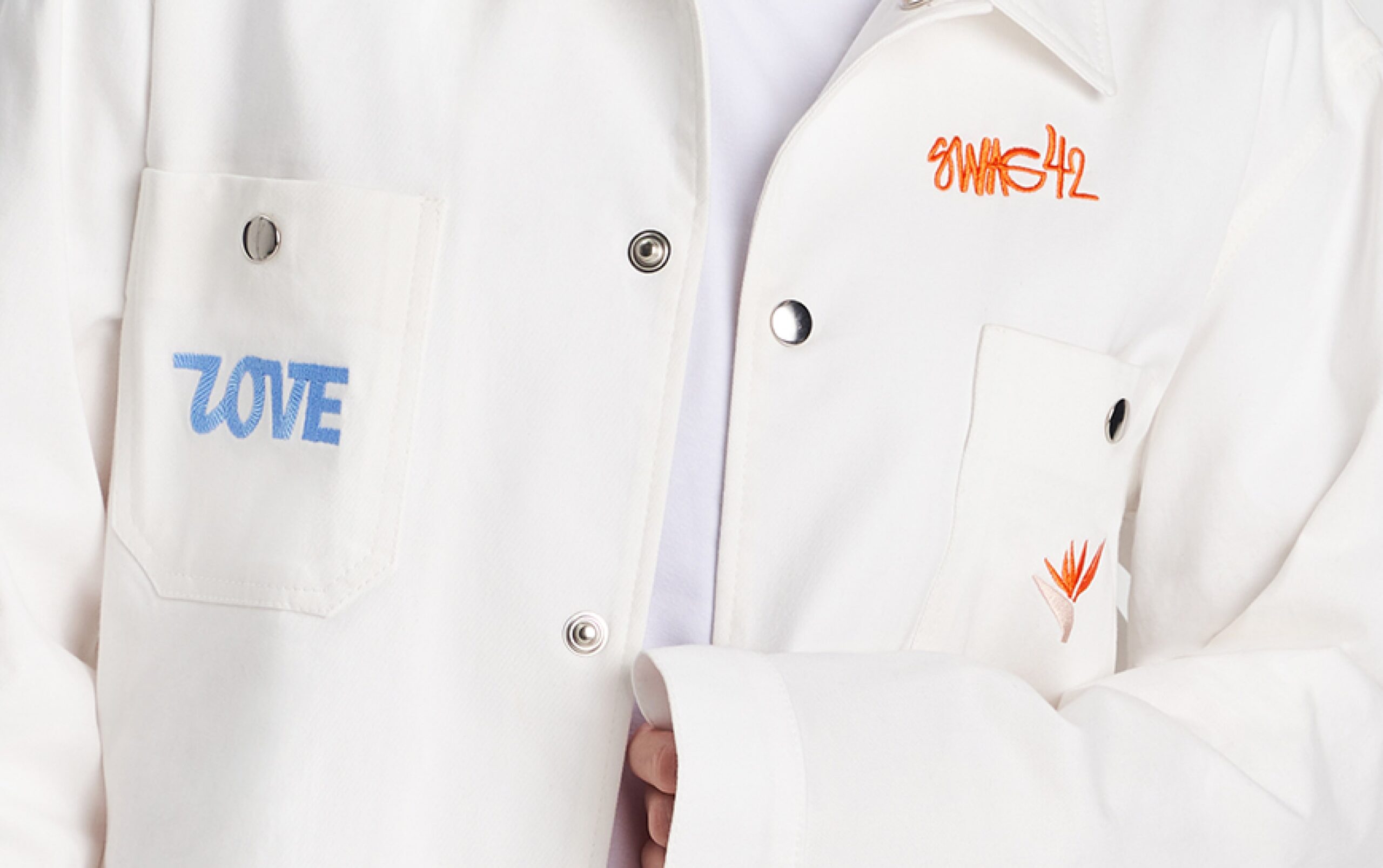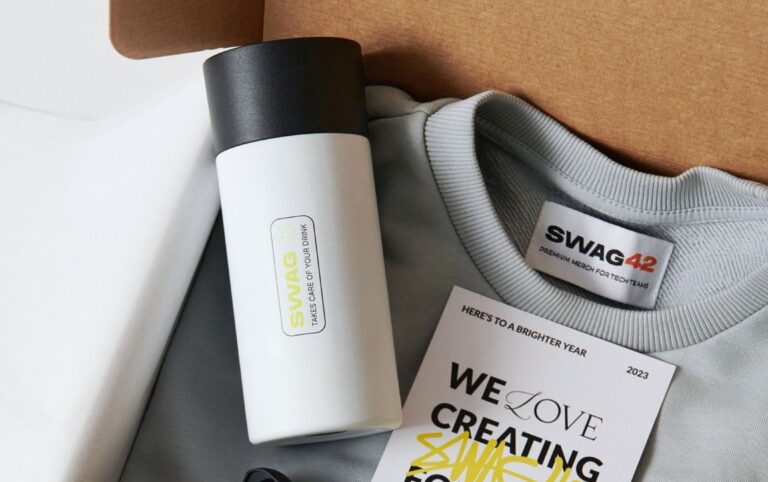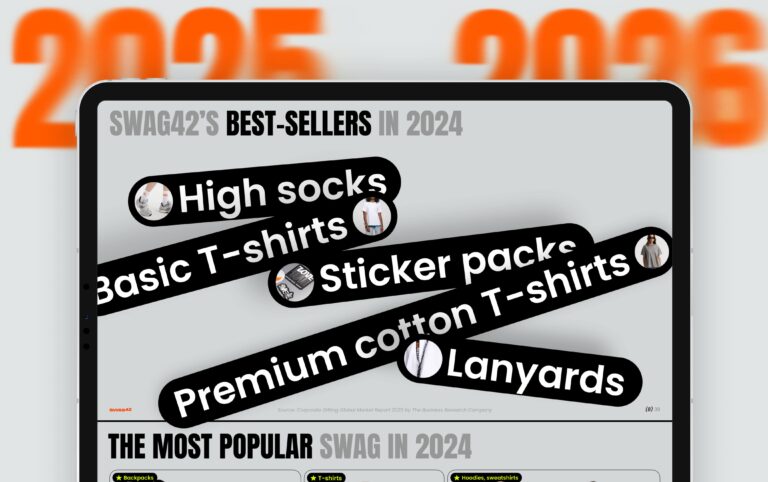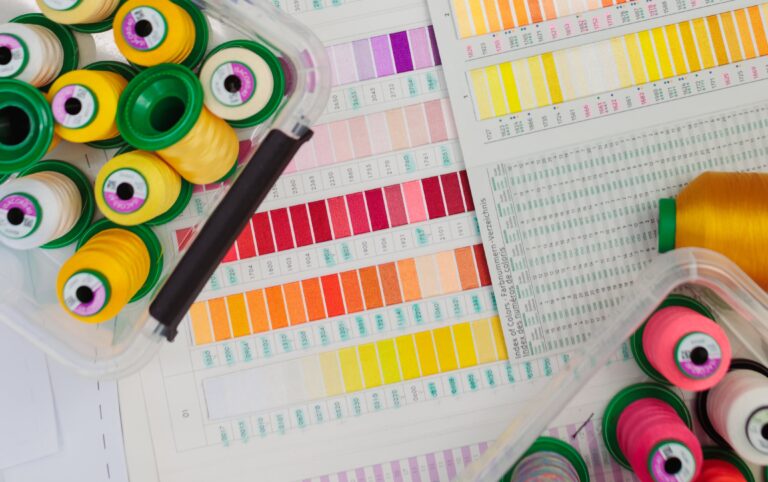Custom embroidery is making a strong comeback with its unique and high-quality vibe. At Swag42, it is the most desirable merchandise customization option, but it has limitations. So, when should you choose merch embroidery, and how should you apply it to trends? Let’s get deep into the embroidery nuances with Darya Vidziakina, Swag42 embroidery expert.
We continue the Backstage series dedicated to Swag42 merch production processes, trends, and insights.
Briefly about embroidery
Embroidery has been around for thousands of years, taking root in ancient China, Egypt, and Greece. Obviously, it was purely a handmade art, but the Industrial Revolution made it possible to produce embroidery on a larger scale in the 18th and 19th centuries.
By the early 20th century, it became especially popular in art movements like Art Nouveau, often featuring nature-inspired patterns and handcrafted details.
Today, embroidery combines traditional techniques with computerized machines that follow digital designs. Embroidery, from classic cross-stitch to vintage patches, is still widely used by artists and designers, making it a timeless and versatile art form.
Why is embroidery often used in merch customization?
Durability
Our clients say hoodies with embroidered branding look new after several years of frequent wear. High-quality machine embroidery lasts through dozens of washes, sometimes even outlasting the fabric. Unlike some prints that crack or fade, embroidery threads stay in place for years.


Versatility

“You can ‘paint’ with thread on items, be it hoodies, caps, or canvas bags. Here at Swag42, we embroider logos, text, and even full-art illustrations. I believe embroidery has no limits: You can always pick thread colors and stitch types to bring any idea to life. Even a small embroidery feels special because it carries the maker’s soul.
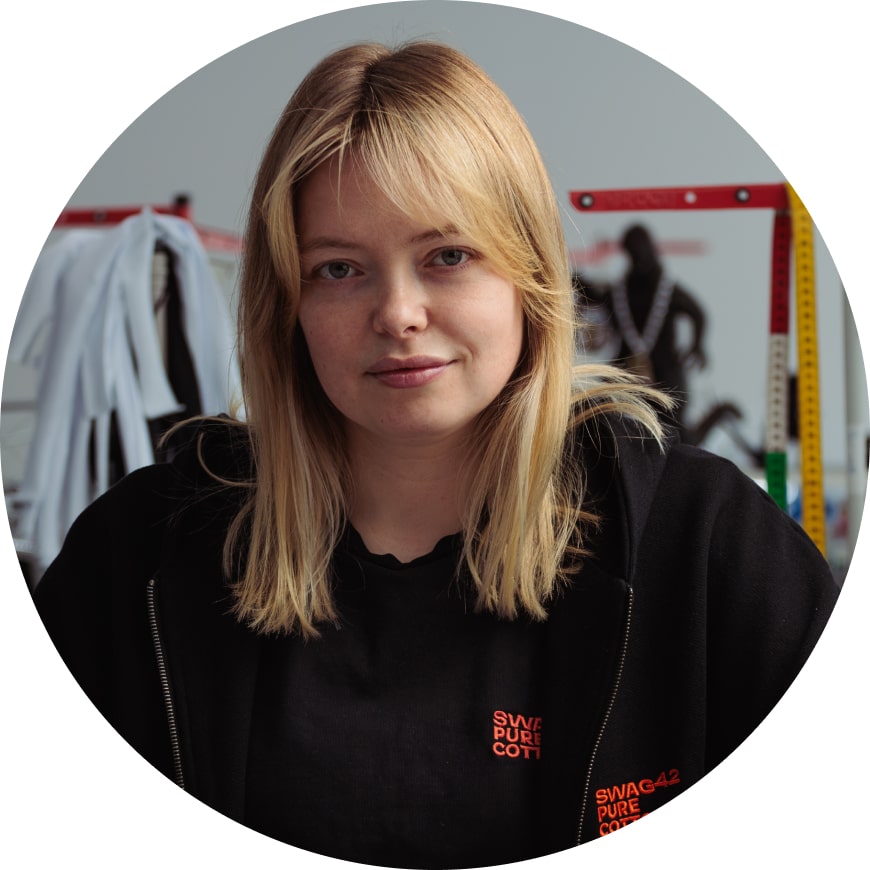
Darya Vidziakina,
Swag42 Computerized Embroidery Expert
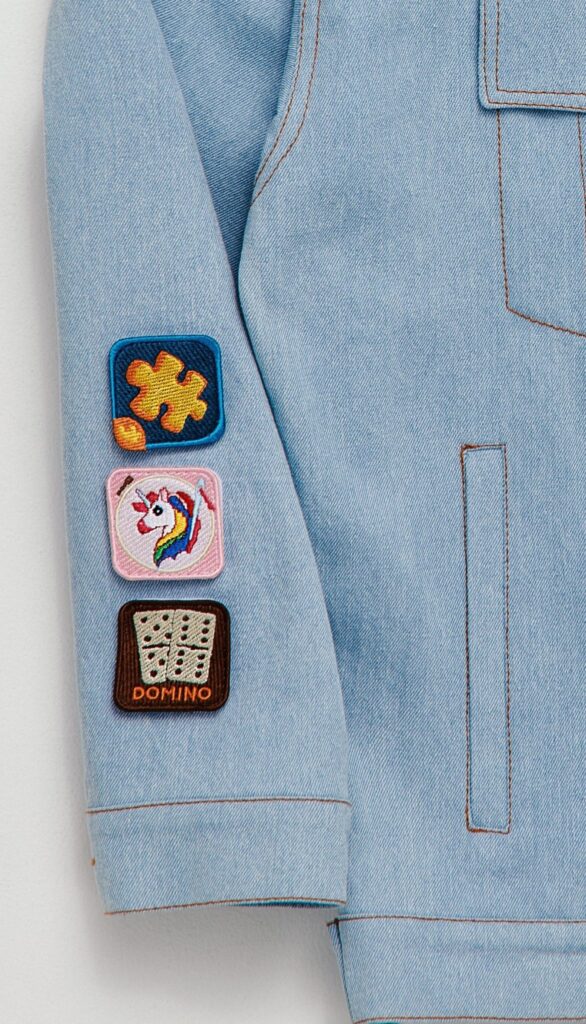

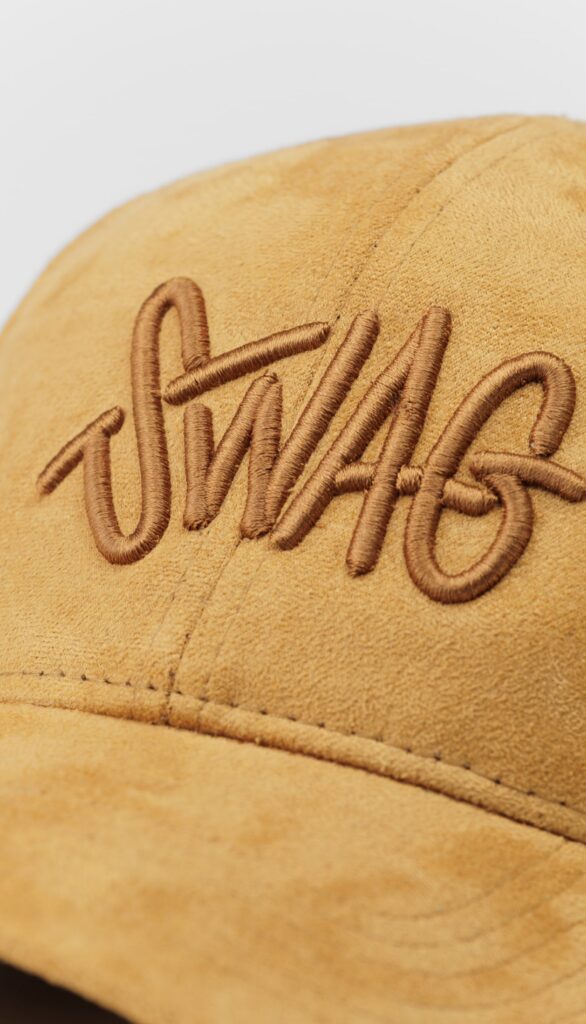
Sustainability
Embroidery customization is more sustainable than printing because it uses fewer chemicals, produces less waste, and results in longer-lasting products. Unlike printing, embroidery doesn’t rely on inks or solvents that can be harmful to the environment.
Threads used in embroidery are typically more durable, which means the design withstands repeated washing and wear, reducing the need for replacements. The market also offers many eco-friendly threads, such as organic cotton or soy fabric, threads from recycled polyester or leftover fabric, and more.
What’s the merch embroidery process?
Everything starts with an idea. For example, a client wants to add a logo, artwork, or text to their branded hoodies. Swag42 has an in-house graphic design team that creates layouts and selects styles, fonts, and graphics.
The next step is “digitizing” the embroidery. It can be described as “drawing” with threads in a special program.

I always inspect design through the eyes of an embroiderer, laying it out into threads and stitches. Sometimes, details that look sharp in print must be simplified or removed because they get lost in embroidery. My job is to keep the idea intact and ensure it looks clear and nice when stitched.
In specialized software, I set up parameters for the embroidery location and the stitch density, order, and direction. I know it sounds a bit technical, but in reality, it’s like painting with a mouse and layers in my mind: I tell the machine how to move the needle and thread layer by layer.

Darya Vidziakina,
Swag42 Computerized Embroidery Expert
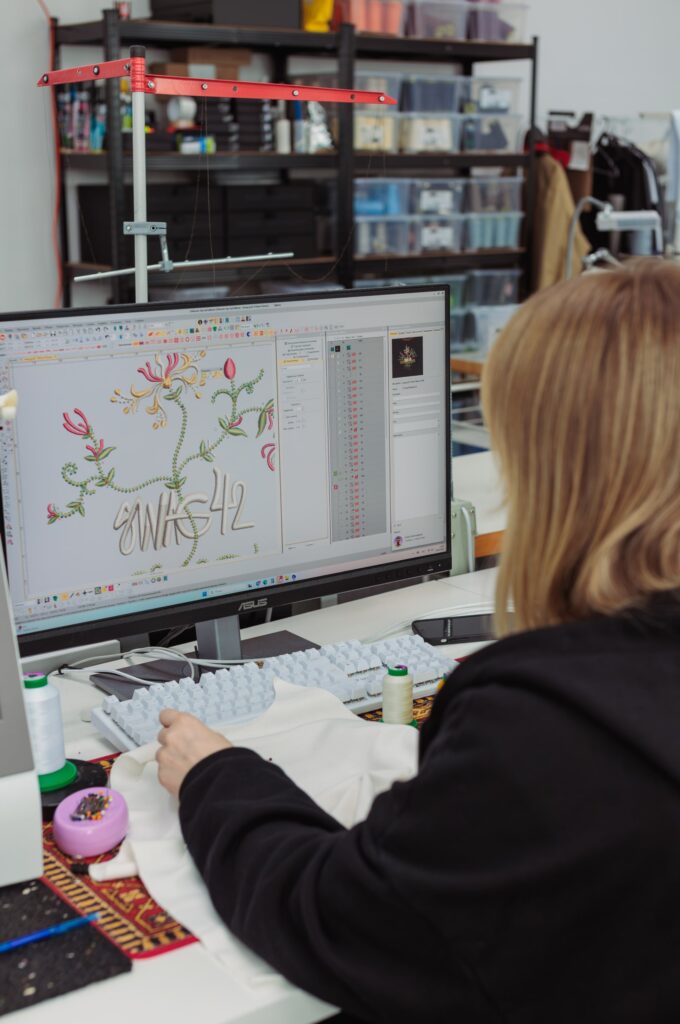
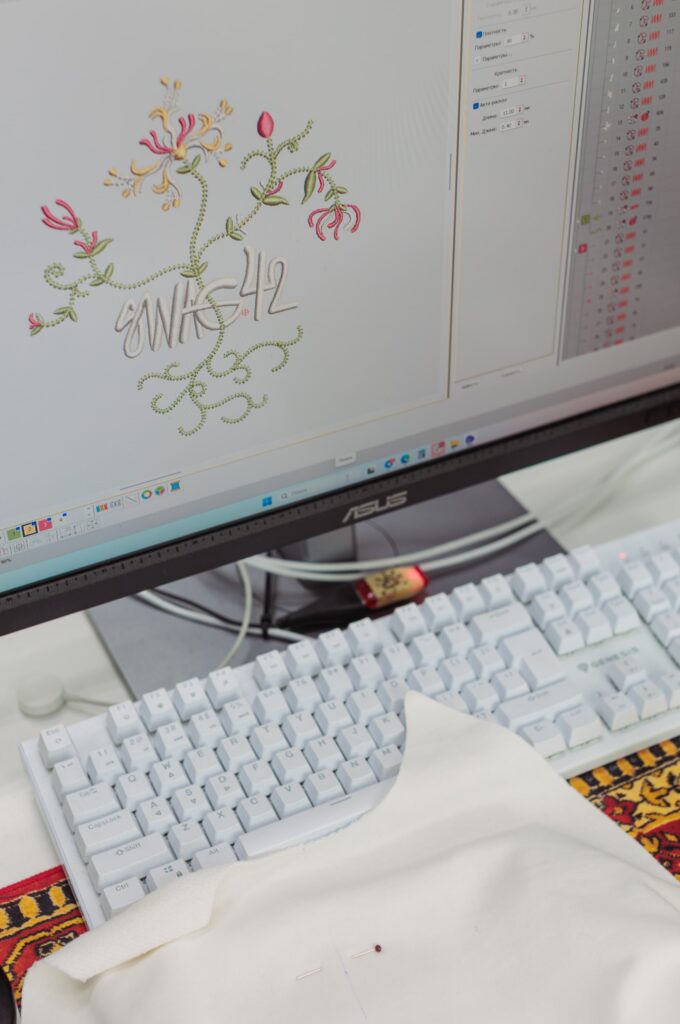
Thread selection
- Choose embroidery threads (typically polyester or rayon). Darya, for example, recommends Isacord 40 threads because they’re bright, stable, and don’t fade.
- Match thread colors to the design file.
When the stitch file is ready and the embroidery machine is threaded, it is time for a test run on a similar fabric to check the stitch layout. If something goes wrong, the embroiderer makes the necessary adjustments in the embroidery software.
When the test is perfect, the real items get embroidered. The machine follows the programmed stitch file, sewing the design layer by layer.
Multi-needle machines automatically switch threads for different colors, while single-needle machines require manual thread changes. At Swag42, we use multi-needle machines.
After embroidery is complete, the embroiderer adds the finishing touches: trimming the excess threads, steaming, and pressing the fabric for a clean finish.
And there it is: the finished product, neat and beautiful, ready for the client.
Which fabrics are good for embroidery and which are not?
Almost every merch customization project raises the big question: Embroidery or print? The answer is simple: it depends on the item and the fabric.


Heavyweight cotton, sweatshirt fleece, denim—all these thick materials work perfectly with embroidery. The stitches sit flat and neat, the design looks crisp, and the fabric doesn’t pucker.

From my experience, I’ve learned that thick, sturdy fabrics love embroidery. An embroidered logo on thick hoodies looks ideal. Caps, work shirts, and bags made from heavy cotton are also perfect for embroidery since these fabrics hold shape very well.

Darya Vidziakina,
Swag42 Computerized Embroidery Expert
Sports polos or stretchy T-shirts can be embroidered, but there is a risk of jamming. If the fabric stretches a lot, stiff embroidery can stop it from moving and might even crack. To embroider on kits, we use a stretchy stabilizer and softer stitches.
However, embroidery is risky on thin and delicate fabrics. Too many needle holes can leave marks, and the embroidery can feel rough or pull at the fabric.

For silk or satin fabrics, we always recommend printing because it goes smoothly and doesn’t damage the material.
If the fabric is thin or you want photographic detail, shadows, or complex gradients, digital print is the clear winner. We’ve had orders for artwork with lots of shading, and even though I love thread, this is a job for print, not embroidery. I always believe you should match the technique to the fabric, not vice versa.

Darya Vidziakina,
Swag42 Computerized Embroidery Expert
What are the current trends in embroidery?
Currently, several embroidery trends are influencing merch customization.
Minimalism vs chaos
On the one hand, people prefer minimalist designs. Clean lettering, small logos, and geometric shapes are now trending.
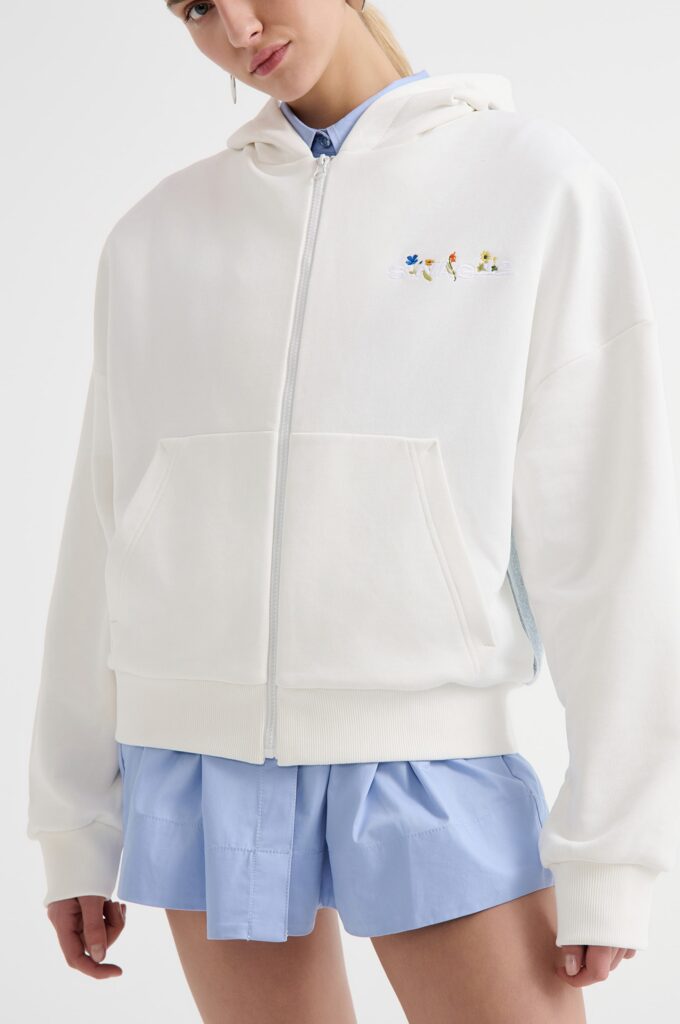
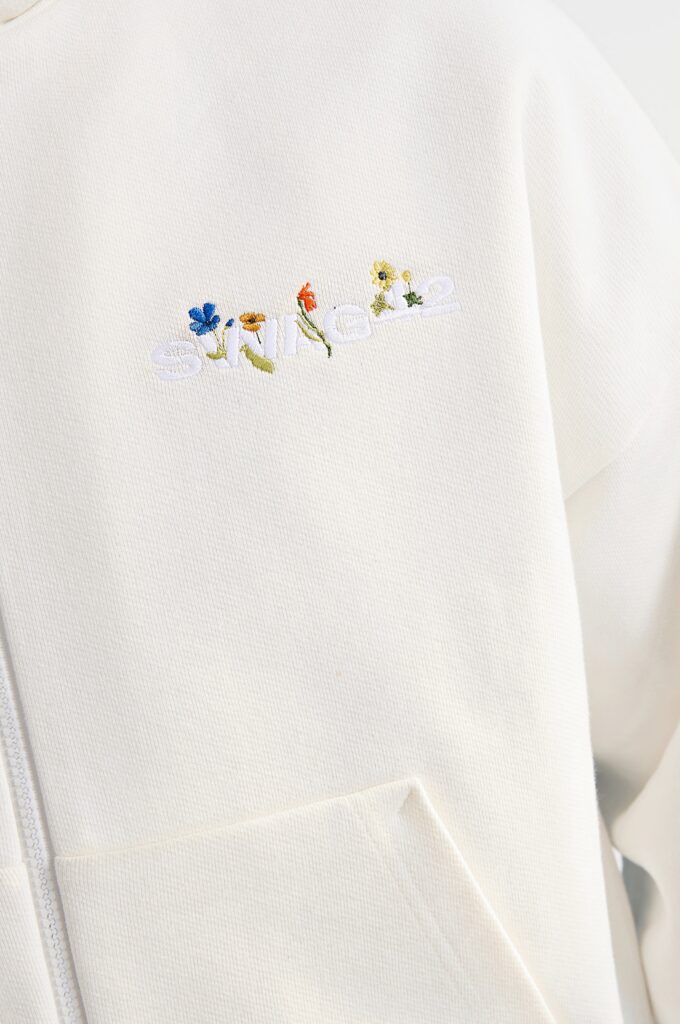
At the same time, as stated in Vogue Business, we’re now entering the phase of “chaotic customization”. Instead of keeping things simple, you mix and match freely to show your bold and creative style. This trend is especially popular among Gen Z. Some examples include accessorizing accessories, adding DIY embellishments, or pairing unexpected pieces.

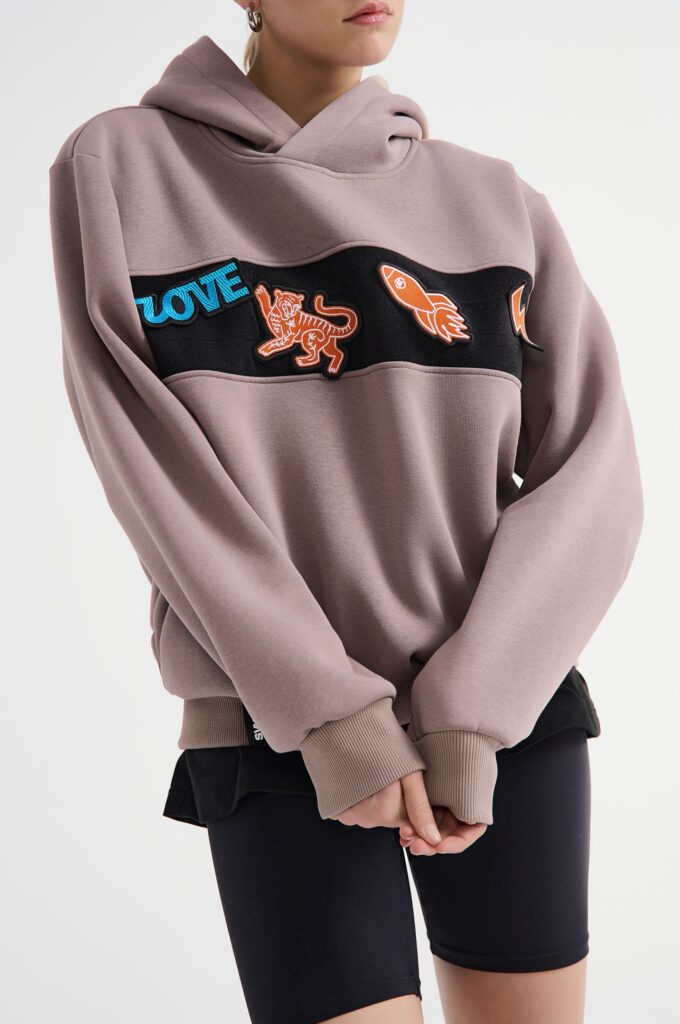
Monochrome
Monochrome looks are especially sharp—black on white or white on black. This kind of embroidery is noticeable but not overpowering.

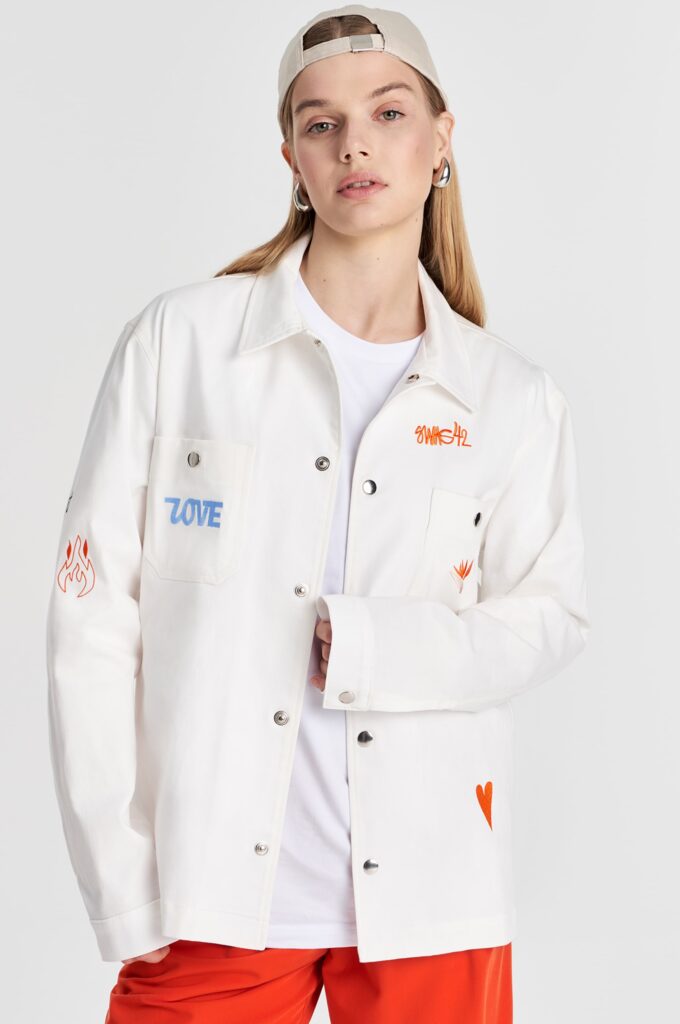
Retro patches
Retro patches from the ’80s and ’90s are making a comeback. Many people ask to embroider funny phrases or images on patches to sew onto jackets, backpacks, and tote bags.
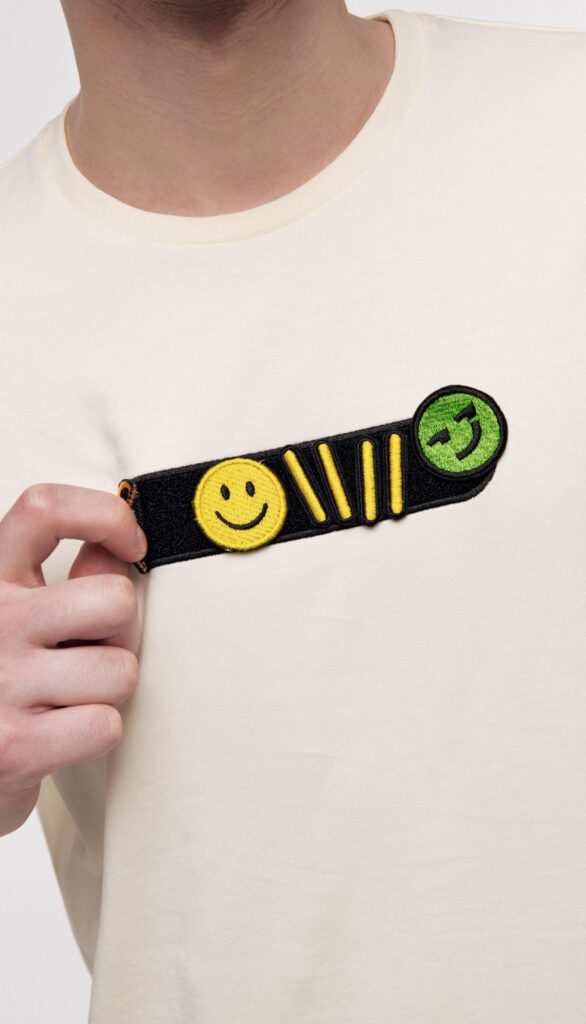
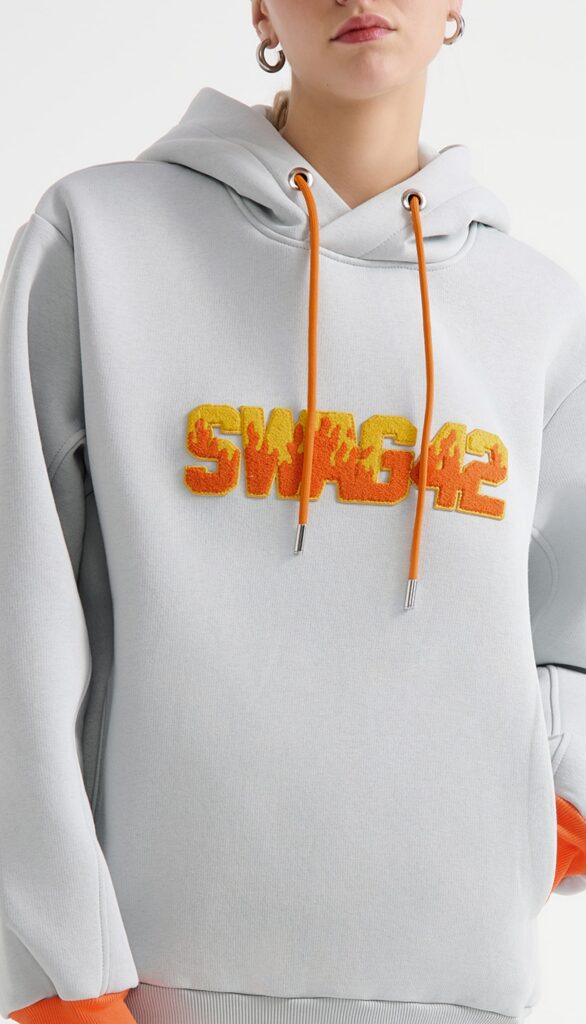

Print and embroidery combo
There’s also a trend in combining prints and embroidery. We print the base design and then add embroidery to key details.

Recently, we combined two techniques: reflective flex print and neat outline embroidery. We printed the logo on black fabric with flex that shines in any light, especially cool in the dark or with a flash. Then, we stitched the letter outlines with bright, slightly contrasting thread. As a result, we’ve achieved a mix of shine and texture: up close, you see the texture, while from afar, the fabric catches light like neon.

Darya Vidziakina,
Swag42 computerized embroidery expert


How to care for embroidered items?
Here are a few simple rules on how to care for your embroidered items from Darya:
- Wash on a gentle cycle, always inside out. This way, the stitches won’t rub against the drum or get caught on zippers, buttons, or other clothes.
- Cold water and mild liquid detergent are your best friends. In contrast, hot water and harsh chemicals like bleach can damage the thread colors.
- Air dry whenever possible. Lay your item flat on a towel and let it dry naturally. You can use a dryer, but only on the gentlest setting, and don’t over-dry. Iron only from the inside or through a cloth, without steam.

Honestly, there’s nothing complicated. Embroidery doesn’t require any special products or extra fuss. I even have jeans with a patch I’ve washed carelessly for a couple of years—and it’s still going strong! (Obviously, it’s not a recommendation, just proof that quality embroidery can stand a lot 🙂).

Darya Vidziakina,
Swag42 computerized embroidery expert
If you are interested in more details about merch embroidery, drop us a line and we’ll answer your questions.
In the following article from this series, we’ll examine different printing techniques, providing expert insights and real-life examples. Stay tuned!
